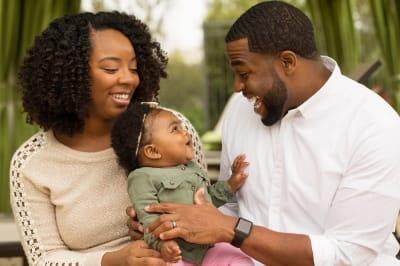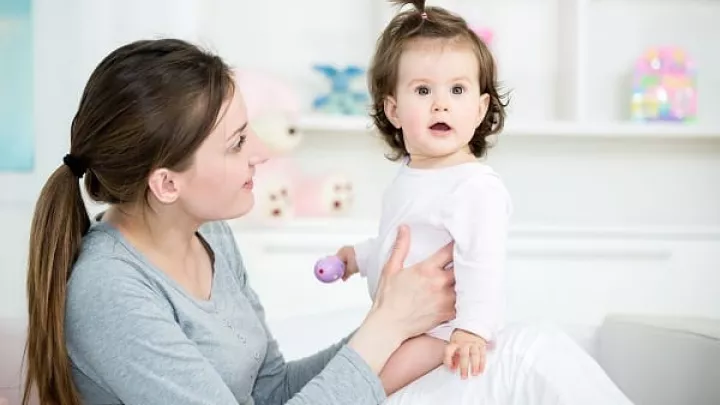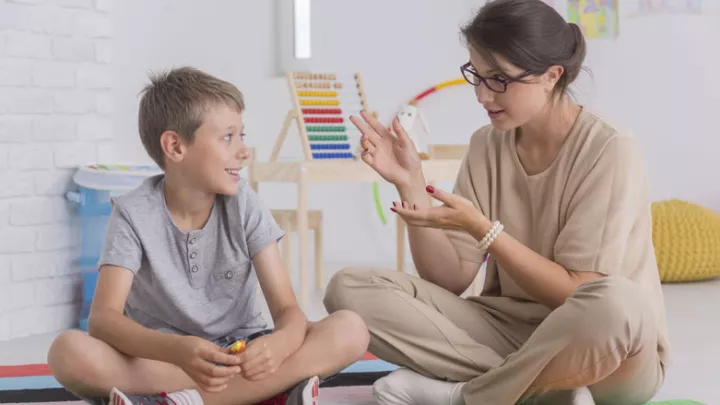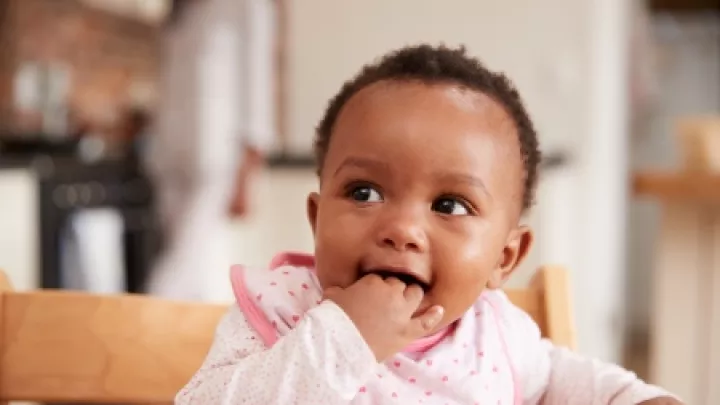Learning to Talk

Learning to Talk: Speech Milestones During the First 18 Months
From the day you bring your baby home from the hospital, talk, sing and read to her every day. There is a strong correlation between the number of words a baby hears and their later success in school; more words means a greater chance at language and school achievement. According to the American Speech-Language-Hearing Association (ASHA), here are some tips on what milestones to look for as your baby grows, how to model language skills for your baby, and when to talk to your pediatrician about concerns.
0 to 6 MONTHS:
Between birth and 6 months, your baby may be able to do the following:
- Respond to your voice
- Smile when spoken to
- Notice and look toward noises like musical toys or environmental sounds (e.g., sirens)
- Coo and babble (Babble may be repeated vowels such as “ah ah”)
- Laugh
- Cry differently for different needs
During this time, talk to your baby about anything—your day, your interests, his birth story, his family, etc. When he moves his mouth around, respond to him, saying something like “That is an interesting story” and “I totally agree with you.” Expose your baby to all kinds of music, and sing and dance along to it. You don’t have to have a great singing voice—your baby loves the sound of your voice and he won’t care. Shaking a rattle while you dance will give your baby something fun and colorful to watch in addition to watching you. Reading to your baby does not require you to have tons of baby books. Instead, read him whatever you are reading—even The New Yorker!
6 to 12 MONTHS:
Between 6 and 12 months, your baby may be able to do the following:
- Play along to games like Peek-a-Boo
- Listen to someone talking to her
- Recognize familiar and common words like “cup,” “spoon” and “book”
- Use gestures to communicate (e.g., raising arms to indicate wanting to be picked up, waving)
- Babble long strings of different sounds
- Say her first word (Many babies say their first word around their first birthday. But don’t worry if your baby is not talking yet.)
To model good language skills, talk to her while you change her diaper, give her a bath, change her clothes or play with her. For example, during the bath, you can name the parts of her body and talk about the temperature of the water. During play, you can talk about the actions she is doing and the colors of the toys (e.g., “That little red ball sure is bouncy.”) Anything works! At this age, babies like to imitate sounds, so you can imitate and expand on what your baby says too. If she says, “bababa,” reply “wabaya” and see what she can do! Sound play can be fun at this age—pick one of the sounds that she makes (e.g. “buh”) and model all the different syllables you can make (e.g., ba, be, boy, buh, bang, bong, bye, bo, boo, etc.).
12 to 18 MONTHS:
Between 12 and 18 months, your baby may be able to do the following:
- Follow simple commands and understand simple sentences (e.g., “Where’s Daddy?”)
- Listen to stories, songs, etc.
- Begin to point to body parts and/or pictures
- Produce the following sounds correctly when using words : p, b, m, h, w
- Use one- to two-word utterances (e.g., “Kitty!” “Daddy shoe” “Mommy go?”)
- Use new words each month
During this time, speak in short but complete grammatical sentences (e.g., “I see the bluebird too.”). Create environments in which your baby must use language; for example, give him a portion of his meal and help him ask for “more;” keep toys in a closed bin and encourage him to ask you to open it; give him choices for toys or food and help him to make the choice through gestures or words. Provide lots of opportunities for baby to interact with others by going to the library, park or mall.
There is some overlap between the sections above, and all children grow at their own rate and in their own way. However, if you notice that your baby is not showing attempts at communication by 18 months old, talk to your pediatrician. Communication includes words, vocalizations and gestures. Clapping his hands when you finish a song, waving goodbye to family members and pointing to what he wants from the cabinet all count as communication.
Some of the early signs of a speech-language disorder include:
- Not interacting with others
- Not babbling or late babbling
- Making few sounds and words
- Not using gestures
- Not seeming to understand what others say
If you and your pediatrician have concerns about your baby’s communication skills at her 18-month-old well-baby visit, yourpediatrician may wish to refer her for an evaluation with a speech-language pathologist (SLP). The SLP will talk to you about your baby’s speech and language skills and hearing ability, observe her play skills and do some tests to check her understanding and expression of language. The SLP will determine whether weekly therapy services may benefit your baby and help her to communicate better with you and others.


